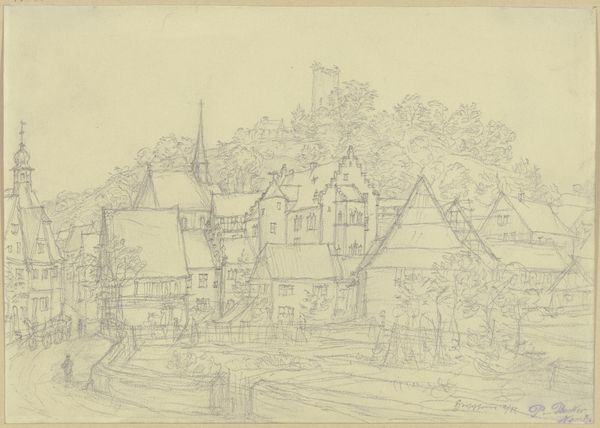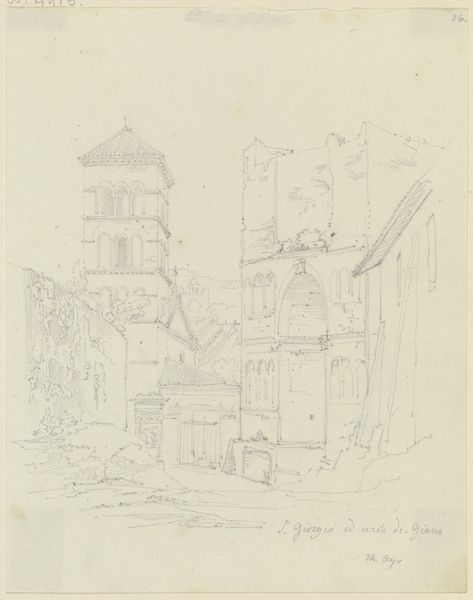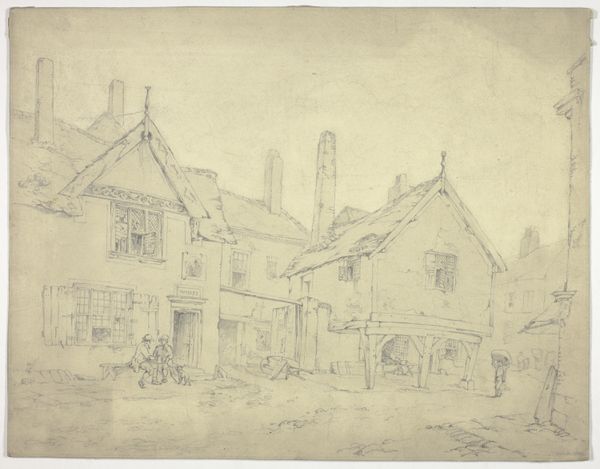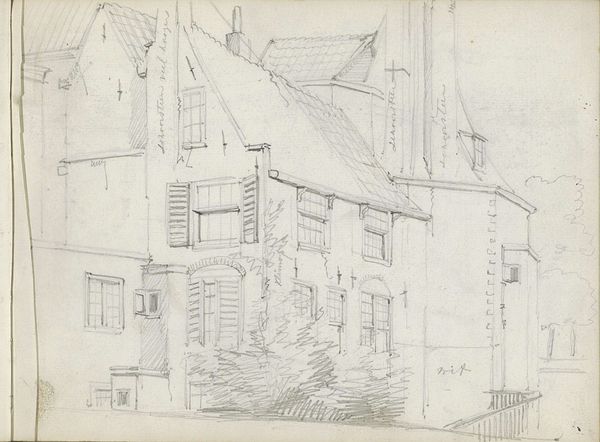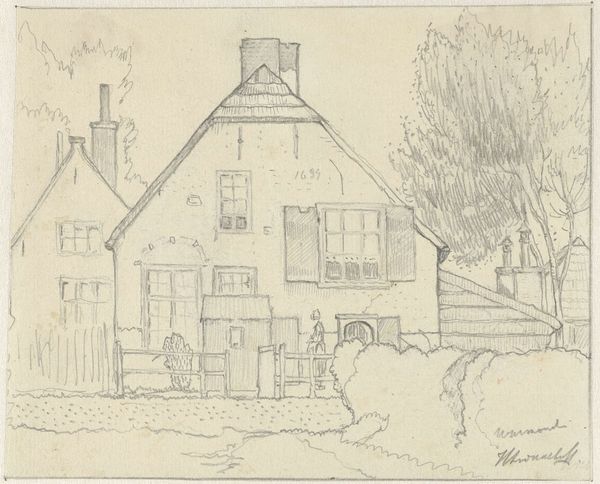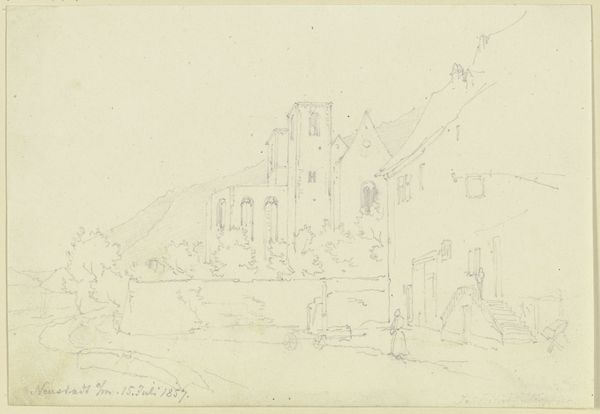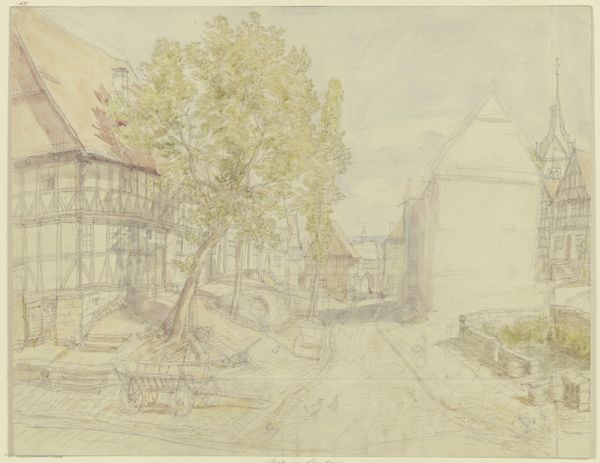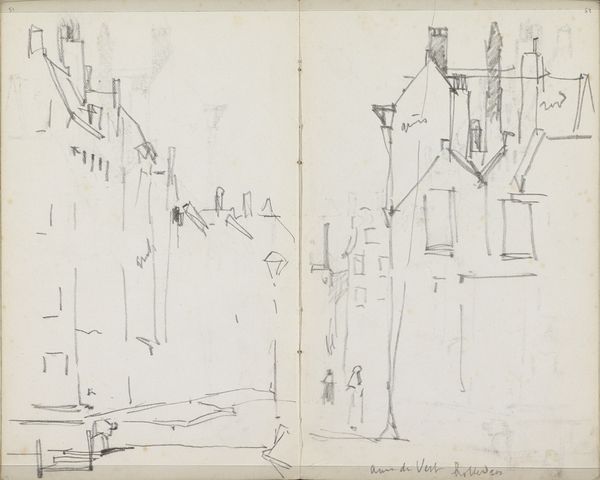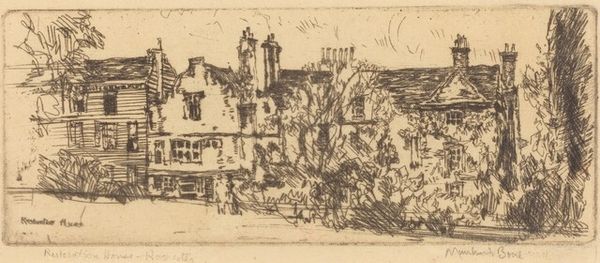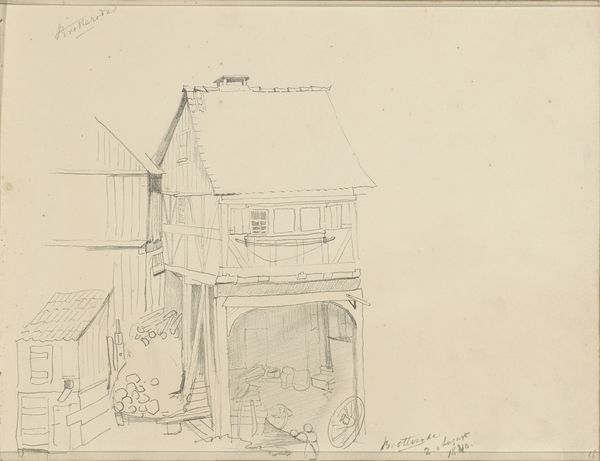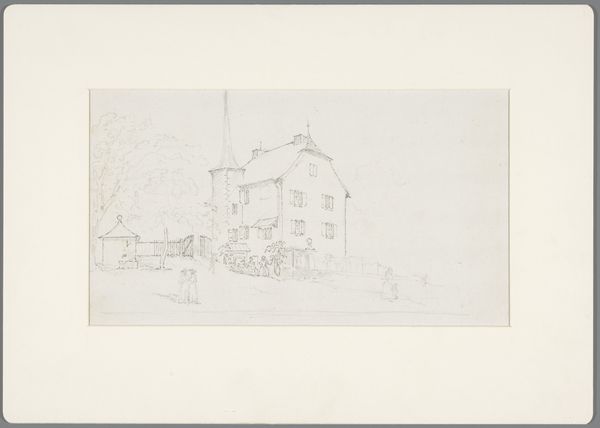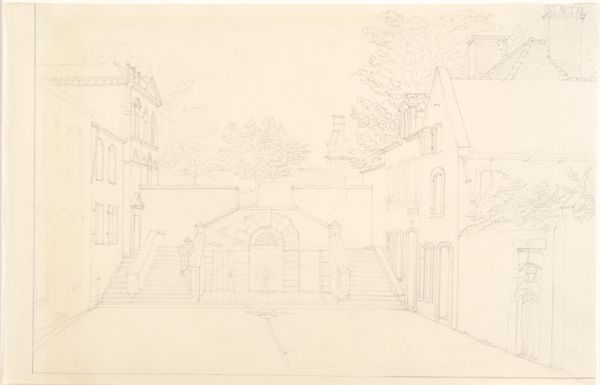
Copyright: Public Domain
Editor: So, here we have Johann Friedrich Hoff's "Häuserzeile in Berg Nassau an der Lahn," sketched around 1859. It's a pencil drawing on paper, currently held at the Städel Museum. What strikes me is how delicately he captured these old buildings; there's a quiet charm about it. What do you see in this piece? Curator: Beyond the quaint aesthetic, I see the encoding of cultural memory within the architecture itself. Note the timber framing – each beam, each joint speaks of generations of craftsmanship, beliefs, and social structures. The lines are light, but confident; almost a dreamscape. Consider how Romanticism valued emotion and the past; the sketched houses aren't merely buildings, they are symbols loaded with longing for simpler times. Editor: So the houses become symbols in and of themselves. Do you think the very act of sketching it in pencil has some symbolic value? Curator: Absolutely. Pencil, unlike bolder mediums, invites intimacy. It speaks of transient observation, of capturing a fleeting moment before it vanishes. The very softness suggests the fragile nature of memory, doesn't it? Each of these marks echoes and connects our emotions and ideas with something greater. And these houses - I think about the people who inhabited them...the lives lived and unlived, stories whispered across centuries that echo in these simple architectural forms. Editor: That’s a great point; it makes the drawing much more evocative. I see this now not just as a depiction of a place, but as a vessel for historical and cultural narratives. Curator: Precisely. These aren't merely houses, but visual reminders and time capsules filled with collective memory and heritage. Editor: It’s interesting to consider art’s potential to encode historical and cultural context and the fragile nature of memory itself!
Comments
No comments
Be the first to comment and join the conversation on the ultimate creative platform.

